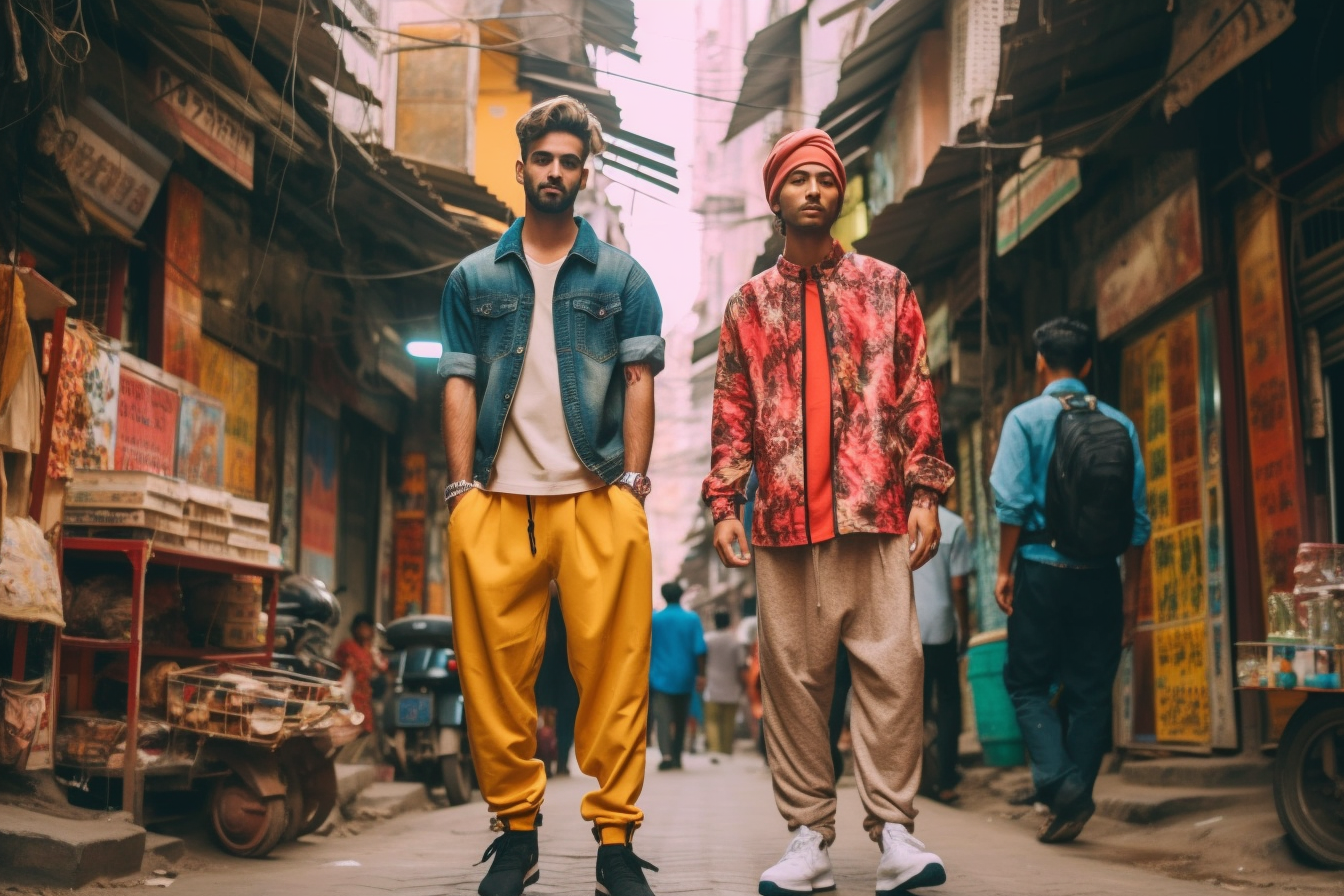Streetwear is more than just clothing; it's a cultural movement that has reshaped the fashion industry. From its humble beginnings as a subculture to its current position as a global phenomenon, the evolution of streetwear is a fascinating journey through style, identity, and rebellion.
Roots of Streetwear (1970s)

In the 1970s, a counterculture began brewing on the streets, rejecting conventional fashion norms and celebrating individuality. This marked the inception of streetwear, a movement that blurred the lines between clothing and personal expression. Rooted in the DIY spirit, streetwear emerged from urban communities looking to distinguish themselves from mainstream fashion. It incorporated graphic tees, sneakers, and accessories as symbols of identity.
The Rise of Skate and Surf Culture (1980s)

The rise of skate and surf culture played a pivotal role in propelling streetwear into the mainstream. During the 1970s and 1980s, the burgeoning skateboarding and surfing scenes gave birth to a distinctive style that went beyond just sport and transformed into a way of life. This movement brought about a seismic shift in fashion, influencing the trajectory of streetwear as we know it today.
Brands like Vans recognized the opportunity to create footwear that resonated with skaters and surfers. The iconic Vans "Old Skool" sneakers, with their sturdy construction and signature side stripe, quickly became synonymous with skate culture. The logos and designs that adorned the clothing and footwear associated with skate and surf culture held deep meaning within these communities. They represented a sense of belonging, identity, and a shared passion for adventure. Brands like Quiksilver, Billabong, and Stüssy emerged as pioneers in translating the spirit of these subcultures into fashion statements, further solidifying the connection between streetwear and the skate and surf scenes.
Mainstream Explosion and Hip-Hop Influence (1990s)

In the 1990s, streetwear's influence expanded further through the rise of hip-hop culture. Artists like Run-DMC, LL Cool J, and the Wu-Tang Clan became style icons, popularizing brands like Adidas and Timberland. This era also saw the emergence of streetwear brands like Supreme, which leveraged limited releases and collaborations to create hype and exclusivity. Supreme's drop model and partnerships with artists, musicians, and even luxury brands set a precedent that many other streetwear brands would follow.
The Digital Age and Global Reach (2000s-2010s)
The 2000s and 2010s marked the era of digital transformation for streetwear. The rise of social media platforms like Instagram and Facebook allowed brands to reach a global audience. Online shopping for street style store clothes became the norm, making it easier for fashion enthusiasts to access the latest trends. Websites like StreetStyleStore.com became popular destinations for items like cropped shirt and skirt sets, oversized t-shirts for women, and co-ord sets.
The Indian Market

Streetwear has also made significant inroads into the Indian market. With a young and fashion-forward population, India's streetwear scene has been growing rapidly. According to a report by Statista, the Indian apparel market is expected to reach $88 billion by 2025, with streetwear being one of the fastest-growing segments. Brands like Fucking Awesome and collaborations with international labels have found a foothold among Indian youth, who are increasingly looking to express their individuality through fashion.
Sustainability and the Future of Streetwear

As environmental awareness grew, so did the demand for sustainable practices in streetwear. Brands began using eco-friendly materials and ethical production methods to align with the movement. The future promises further innovation. Streetwear will likely continue to influence high fashion while also embracing tech-infused designs and pushing boundaries. Sustainability will remain a key focus, with more brands adopting green practices to appeal to a conscious consumer base.
Conclusion
The evolution of streetwear mirrors societal shifts—from counterculture rebellion to cultural phenomenon. It's a testament to fashion's power to reflect and shape our identities. As streetwear continues to evolve, it remains a powerful form of self-expression for Gen Z. Whether you're rocking a cute oversized t-shirt or a sleek co-ord set, the essence of streetwear lies in its ability to adapt and reinvent itself while staying true to its rebellious roots.
Next time you're looking to elevate your wardrobe, remember to shop street style online and embrace the ever-evolving world of streetwear. With its rich history and dynamic future, streetwear is here to stay, offering endless possibilities for fashion-forward individuals everywhere.


